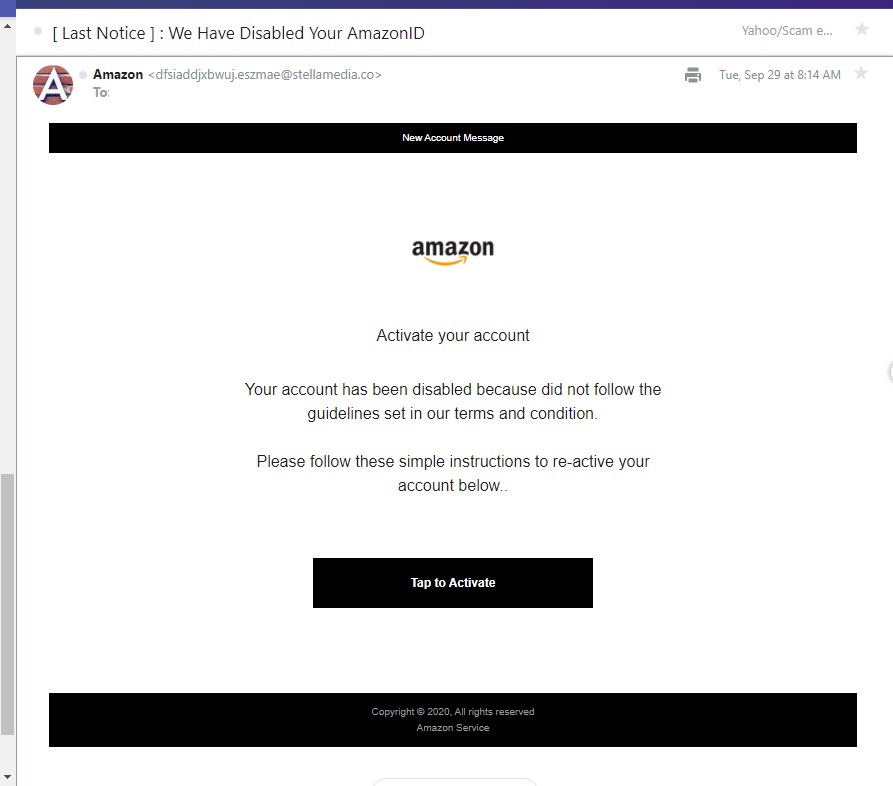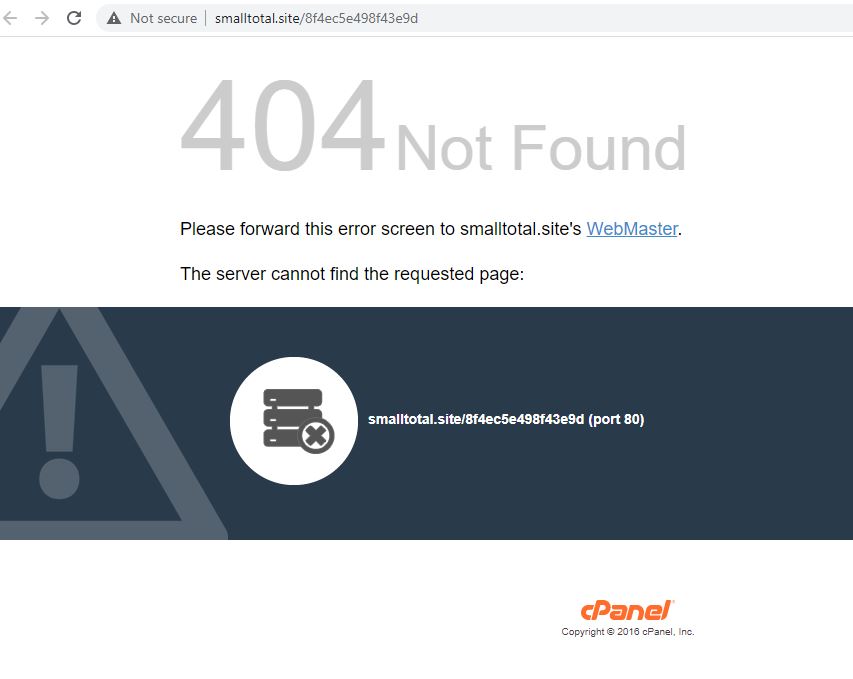Is My Amazon Account Disabled?
Well folks, I received an email from Amazon that makes me ask the question “Is my Amazon account disabled?”. What could I have possibly done to deserve this? Did I not follow their terms and conditions? Did I not properly purchase a product from their site? Maybe there is something more sinister at play here.
If you guessed that the email I’m referring to is a phishing scam, you would be correct! It’s time to take a look at the latest phishing scam that I’ve received in my inbox. Not too long ago, I talked about a PayPal phishing scam I received in which it said that my account with them had been suspended. I exposed that email for what it really is, explain why you shouldn’t click the link inside the email, and what the number one red flag is when determining whether an email is a phishing scam or not.
Today, I’m going to be taking a look at this email I recently received, claiming to be from Amazon, and show you what gives this email away as really being a phishing scam. I will even point out what happens when I click the link inside the body of the email, something you should never do.
The Scare Tactic
Scammers are increasingly trying to use language to scare you when you first see an email. When you first see the header of the email, they want you to think that your account from whatever company they are trying to mimic, is in serious trouble. Once you are in panic mode, they hope you won’t be thinking logically and you’ll be eager to click the link inside the email, be taken to a fraudulent site, and then try to log in with your real log in credentials and then that’s recorded and the scammers now have access to that site.
The header of the email that I received is this: “[ Last Notice ] : We Have Disabled Your AmazonID“. As you can see, they are trying to get me to panic by putting in the words “Last Notice”, as if to say they have tried contacting me multiple times about my Amazon ID having issues.

The thing is though, I have NOT received any emails from Amazon about my account or ID having problems. In fact, it’s quite the contrary. Amazon has sent me official emails letting me know to get ready for their Amazon Prime Day which is in a week or so.
I have to say that the scammers have failed to cause me to go into panic mode and their own email header has mistakes in it that let me know that it’s definitely a scam. I will tell you what those mistakes are (if you haven’t already figured it out) in a little bit. Let’s take a look at what happens when I click the link inside the email.
Clicking The Link
Now before I talk about what happens when I click the link inside the email, I need to reiterate that you should never ever do that as it will more than likely take you to a fraudulent site that could be littered with viruses and other malware. It’s always better to stay safe and avoid doing harm to yourself and your computer.
As far as when I clicked the link inside this particular email, what ended up happening is that I was taken to an error page. It said “404 Not found. Please Forward this error screen to smalltotal.site’s WebMaster. The server cannot find the requested page”. What more than likely ended up happening is that site had been reported for malicious intent and has since been removed.
This is a very good thing because no one else can fall victim to the kind of scam that I received in my inbox. Having a 404 error pop up after clicking a link inside the email is not the first time this has happened. I also had the same thing happen when I clicked a link inside a PayPal phishing scam.

I believe this means that more and more people are recognizing what kind of emails are really scams and people are taking action and informing the companies the emails are pretending to be from, and letting them know about these fraudulent emails and are quickly getting these phishing sites taken down so that no one falls victim to them. That’s my hope at least. Now I’m going to show you what red flags made it obvious that this email was a phishing scam.
Red Flags You Should Look For
A huge red flag to be on the lookout for are spelling and grammatical errors. There was actually one that I spotted right from the get go just from reading the email header and I’m sure most of you spotted it too. AmazonID should not be one word, it should look like this: Amazon ID. That’s the first grammatical error I encountered.
The second grammatical error happened to be inside the email itself. “Your account has been disabled because did not follow the guidelines set in our terms and condition“. This is the very first sentence of the body of the email. Were you able to spot two errors in that sentence? One is grammatical and the other is a spelling error.
Your account has been disabled because did not, is not grammatically correct because it’s missing the word you between the words because and did not. The spelling error comes on the last word of the sentence which is condition. It should be terms and conditions.
Now that you know how to spot spelling and grammatical errors, I will talk about the biggest red flag of them all which is the email address that this phishing email came from. I’ve talked about this many times, but it is so important as this will be your first line of defense against an email scam.
A legitimate email address from a company that you have an account with will almost always have their name as part of their email address and will generally be fairly short. When you click open an email, you should be able to see an email address at the very top. Even though this email claims to be from Amazon at the top of the email, I noticed that right next to it, the email address is this: dfsiaddjxbwuj.eszmae@stellamedia.co. I don’t know about you, but I’m pretty sure that is not an email address from Amazon. There’s just a weird series of letters and I don’t know what @stellamedia.co is.
Since I now know that this email has some major red flags that give it away, I’m ready to actually do something about it and you all can to if you get a similar type of email.
Let Amazon Know
Amazon, thankfully, has a way of reporting suspicious emails. The email address you can forward phishing emails to is stop-spoofing@amazon.com. The more phishing emails that are reported to them, the quicker they can take action against the scammers and in this case, it looks like action was taken against the phishing website the link inside the email brings you to.
Amazon also gives other information such as if you were to receive suspicious phone calls or text messages. They’ve provided a link to the FTC complaint section and you just follow their onscreen assistant so you can report anything suspicious that you might’ve received.
You can also call Amazon’s customer service number which you can find either at its main website or a quick Google search. The associate should be able to direct you on what to do if you’ve received a phishing scam and have fallen victim to it. They’ll usually put in safeguards to make sure your real Amazon account isn’t hijacked from these scammers.
Share With Others
Is My Amazon Account Disabled? You now know that the answer is no and that I really received a fraudulent email. Now that you know what to look for and what red flags give away a phishing email, you can share this with others, especially those are very vulnerable to these type of scams.
You’ll also want to share with other people that they can forward a suspicious looking email to the actual company the email is trying to mimic. The more people that know about these things, the less chance scammers have of getting multiple people to fall for their scams.
Have you ever been scammed before? Did the email you receive look similar to the one I received that’s trying to pretend to be Amazon? Maybe you know someone who has been scammed and you know they could benefit from articles such as mine. Whatever the case, feel free to post your comments below.

